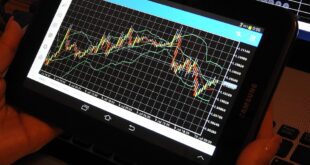The Top 20 Trading Strategies You Need to Know
When it comes to successful trading, having a comprehensive set of strategies in your toolbox is essential. Whether you are a seasoned trader or just starting out, having the right strategies can significantly improve your chances of making profitable trades. In this article, we will delve into the top 20 trading strategies you need to know which will enable you to navigate the markets with confidence.
1. Trend Following
One of the most popular strategies is trend following, where traders aim to identify trends and ride them for as long as possible. This strategy involves analyzing charts and indicators to determine the overall direction of a market and then making trades that align with that trend.
2. Breakout Trading
Breakout trading involves identifying key levels of support and resistance and entering trades when the price breaks out of these established ranges. This strategy capitalizes on the momentum created by price movements after a period of consolidation.
3. Scalping
If you prefer short-term trades, scalping is a strategy that involves making multiple small trades to profit from small price movements. Traders who employ this strategy focus on finding trades with high liquidity and tight spreads.
4. Swing Trading
Swing trading targets medium-term price movements, typically held for several days to weeks. Traders employing this strategy seek to identify overbought or oversold conditions and make trades based on potential reversals at those levels.
5. Range Trading
Range trading involves identifying significant levels of support and resistance in a sideways market and making trades within those boundaries. Traders utilizing this strategy prefer markets that exhibit limited volatility and use oscillators to identify imminent breakouts.
6. Mean Reversion
This strategy assumes that prices will eventually revert to their mean or average value. Mean reversion traders look for market conditions where prices have deviated significantly from their historical averages and take positions betting on their return to the norm.
7. Pivot Points
Pivot points are significant levels calculated from previous price data and act as potential support or resistance areas. Traders use these levels to guide their entry and exit points, with the aim of profiting from reversals or bounces.
8. Contrarian Trading
Contrarian traders go against prevailing market sentiment by taking positions opposite to the majority of market participants. This strategy requires closely monitoring news releases and market sentiment indicators to spot opportunities when the majority is leaning one way.
9. News Trading
News trading focuses on taking advantage of significant market events and economic data releases. Traders employing this strategy follow economic calendars and aim to enter trades just before or after important news releases, capitalizing on market reactions.
10. Fibonacci Retracement
Fibonacci retracement is a popular technical analysis tool that identifies potential levels for reversals. Traders utilizing this strategy draw horizontal lines at key Fibonacci levels to pinpoint potential entry or exit points.
11. Momentum Trading
Momentum traders focus on stocks or other assets showing strong trends and high trading volumes. This strategy aims to ride the wave of significant price movements, entering trades as momentum builds and exiting before it fades.
12. Pair Trading
This strategy involves taking simultaneous long and short positions on two correlated assets to hedge against market risk. Pair trading typically focuses on closely related stocks or assets, where historical correlation suggests profits can be made as their price ratios diverge or converge.
13. Options Trading
Options trading involves buying or selling options contracts that give traders the right, but not the obligation, to buy or sell an asset at a predetermined price in the future. This strategy allows traders to profit from both rising and falling markets without owning the underlying asset.
14. Mean-Variance Optimization
Mean-variance optimization is a quantitative approach that aims to construct an investment portfolio that maximizes expected returns for a given level of risk. This strategy takes into consideration the correlations between different assets and seeks to find the optimal balance between risk and reward.
15. Order Flow Analysis
Order flow analysis focuses on understanding the buying and selling pressure present in the market. Traders utilizing this strategy aim to identify clusters of buy or sell orders to gain insights into potential market direction.
16. Event-Driven Trading
This strategy involves taking positions based on the outcome of specific events such as earnings announcements, mergers and acquisitions, or regulatory decisions. Traders utilizing event-driven strategies assess the potential impact of these events on asset prices to make informed trading decisions.
17. Algorithmic Trading
Algorithmic trading refers to using automated systems or algorithms to execute trades based on pre-defined rules and criteria. Traders employing this strategy rely on computer programs to analyze the market, identify trading opportunities, and execute trades with speed and precision.
18. Sentiment Analysis
Sentiment analysis involves gauging the overall mood or sentiment in the market. Traders utilizing this strategy analyze social media, news articles, and market indicators to determine whether the market sentiment is bullish or bearish, helping inform their trading decisions.
19. Position Trading
Position trading focuses on long-term trades based on fundamental analysis and macroeconomic factors. Traders utilizing this strategy aim to identify trends that can persist for months or even years, and take positions accordingly.
20. Pyramiding
Pyramiding is a strategy where traders keep adding to winning positions as the market moves in their favor. This strategy aims to maximize profits by increasing the position size as the trade becomes more profitable.
By adding these top 20 trading strategies to your repertoire, you’ll have a diverse set of tools at your disposal to navigate the dynamic world of trading. So, go ahead and employ these strategies with enthusiasm and establish your path to trading success!
 Mind Uncharted Explore. Discover. Learn.
Mind Uncharted Explore. Discover. Learn.




